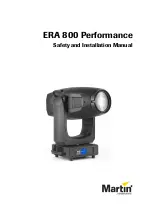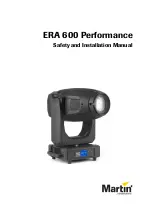
11
H
I G H
P
O W E R
S
P E A K E R
S
E L E C T I O N
S
Y S T E M
Playing Two or More Speaker Pairs Simultaneously
1. Make sure the amplifier or receiver power is OFF and set
the volume to minimum.
2. On the right side of the HPS-4/HPS-6’s front panel is a but-
ton labeled PROTECTION. This button activates the
HPS-4/HPS-6’s impedance correction circuitry. The circuit-
ry assures that your receiver or amplifier will see a safe
operating load when playing multiple speaker pairs simul-
taneously. Since most receivers and amplifiers are not
rated for use below a 4 ohm load, you will need to activate
the Protection button whenever the overall system imped-
ance might fall below 4 ohms. Use the following chart as a
guide for setting the Protection button.
“TECH TIP”
If your amplifier
or receiver has “A”
and “B” speaker-
pair outputs,
connect the speaker
selector to the “A”
outputs. Do not con-
nect anything to “B”.
This will prevent the
amplifier or receiver
from driving an
unusually low
impedance load.
your receiver/amplifier. With six pairs of 4-ohm speakers
playing, the load drops to slightly under 4 ohms.
If you intend to use the HPS series with more than two pairs
of 4-ohm speakers, it is recommended that you verify that
the receiver or amplifier is capable of driving a 4-ohm load.
Consult your Niles dealer, or receiver/amplifier manufacturer,
if you are uncertain about the capabilities of the
receiver/amplifier.
Type of Speaker Wire
For most applications, we recommend you use 16 or
18 gauge, stranded copper speaker wire for the HPS-4/HPS-6
connections. For wiring runs longer than 80 feet, 14 gauge
wire is recommended. Using speaker wire larger than
14 gauge for the HPS-4/HPS-6 connections is not recom-
mended—the wire may not fit into the connectors. Never
use solid-core, aluminum, or “Romex” type wire with the
HPS-4/HPS-6. When running speaker wires inside walls, most
states and municipalities in the U.S. specify that you must use
a special type of speaker wire. Usually, the requirement is
that the wire has a specific “CL” fire rating, such as “CL-2” or
“CL-3”. Consult your Niles dealer, building contractor, or
local building and inspection department if unsure about
which type of wire is best for your application.
Avoiding Interference
Speaker wires can act as an “antenna” for electrical noise.
Locating speaker wires too close to a light dimmer or switch
may cause a “buzzing” or “popping” sound to be heard
through the speakers. If you must locate the HPS-4/HPS-6
wiring near electrical devices, route the speaker wires several
feet away from the electrical wiring.
4
H
I G H
P
O W E R
S
P E A K E R
S
E L E C T I O N
S
Y S T E M
Tools
Required
• 1/8" Standard
Slotted Screwdriver
• Wire Stripper
DS00358ACN/HPS-4/HPS-6 Printer 11/19/03 5:05 PM Page 11


























